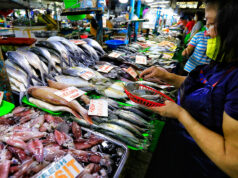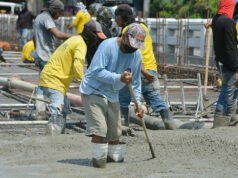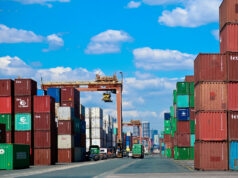Inflation likely picked up in July, poll shows

By Luz Wendy T. Noble, Reporter
ANNUAL INFLATION may have slightly quickened in July on the back of an uptick in food and transportation prices as coronavirus-led restrictions eased, a BusinessWorld poll showed.
A survey of 16 economists last week yielded a median estimate of 2.6% for July’s headline inflation, which is faster than 2.5% in June and 2.4% in the same month of 2019.
The estimate is at the midpoint of the 2.2-3% forecast for July by the Bangko Sentral ng Pilipinas (BSP) and well within the 2-4% target inflation this year.
Inflation in the first half has averaged 2.5%.
With the continued relaxation of restriction measures, commodity prices may have picked up in the past month, according to John Paolo R. Rivera, an economist from the Asian Institute of Management.
“I am expecting [a quicker] increase from June because of slightly more relaxed quarantine policies, opening up of more enterprises, and expanded allowable capacity of opened enterprises,” he said in an e-mail.
The higher food and oil prices are major factors for the faster rise in commodity prices, analysts said.
“The main drivers for July are gains in food prices and net higher pump prices from last month, adding pressure on transport costs as global crude oil prices recover,” Security Bank Corp. Chief Economist Robert Dan J. Roces said.
Global oil prices continue to rise as demand gradually recovers with the lifting of restrictions around the world.
With more people going back to work, a rise in transport costs was observed amid the lack of cheaper public transport such as jeepneys and buses, said Michael L. Ricafort, chief economist at Rizal Commercial Banking Corp.
“This may have forced some people to take much more expensive modes of transportation such as taxis and tricycles,” Mr. Ricafort said.
As inflation remains benign, analysts believe the central bank still has room for an accommodative stance to lend support to the virus-stricken economy, but may opt for a pause in cutting rates and take time to assess the impact of its previous easing measures.
“Regarding the policy rate, inflation will remain a backburner issue for BSP and we don’t expect a cut in the policy rate at the next meeting,” Kanika Bhatnagar, economist at ANZ Research said in an e-mail.
The BSP has so far shaved rates by a total of 175 basis points (bps) this year, with the latest easing round in June. This brought the overnight reverse repurchase, lending, and deposit rates to record lows of 2.25%, 2.75%, and 1.75%, respectively.
The 250 bps worth of cumulative rate reductions from 2019 to 2020 so far have already more than offset the 175 bps of rate hikes in 2018 when inflation soared.
With June inflation at 2.5%, the country is now under a negative real interest rate environment.
The Monetary Board (MB) will have its fourth policy setting meeting for the year on Aug. 20.
The BSP will likely adopt a wait-and-see approach to gauge the impact of its aggressive policies done so far and if the fiscal side will catch up on stimulus measures, said Jessie Lu, an economist at Continuum Economics.
“If needed, we believe there is perhaps some room for further reduction in reserve requirement ratio,” she said in an e-mail.
Reserve requirements for thrift and rural banks were cut by 100 bps in July to three percent and two percent, respectively in a bid to support increased lending for small businesses amid the crisis. The measure is seen to release P10 billion in liquidity to the small lenders.
The BSP has likewise cut the reserve requirement ratio of universal and commercial lenders by 200 bps in April to 12% to boost liquidity in the midst of the lockdown. The MB is authorized to cut up to 400 bps of lenders’ reserve requirement this year to support banks’ lending capacity during the crisis.



